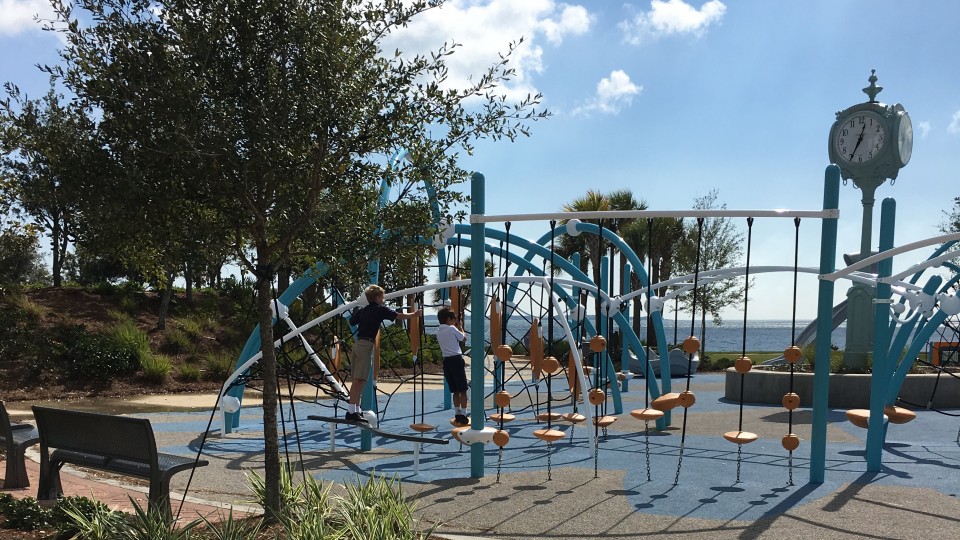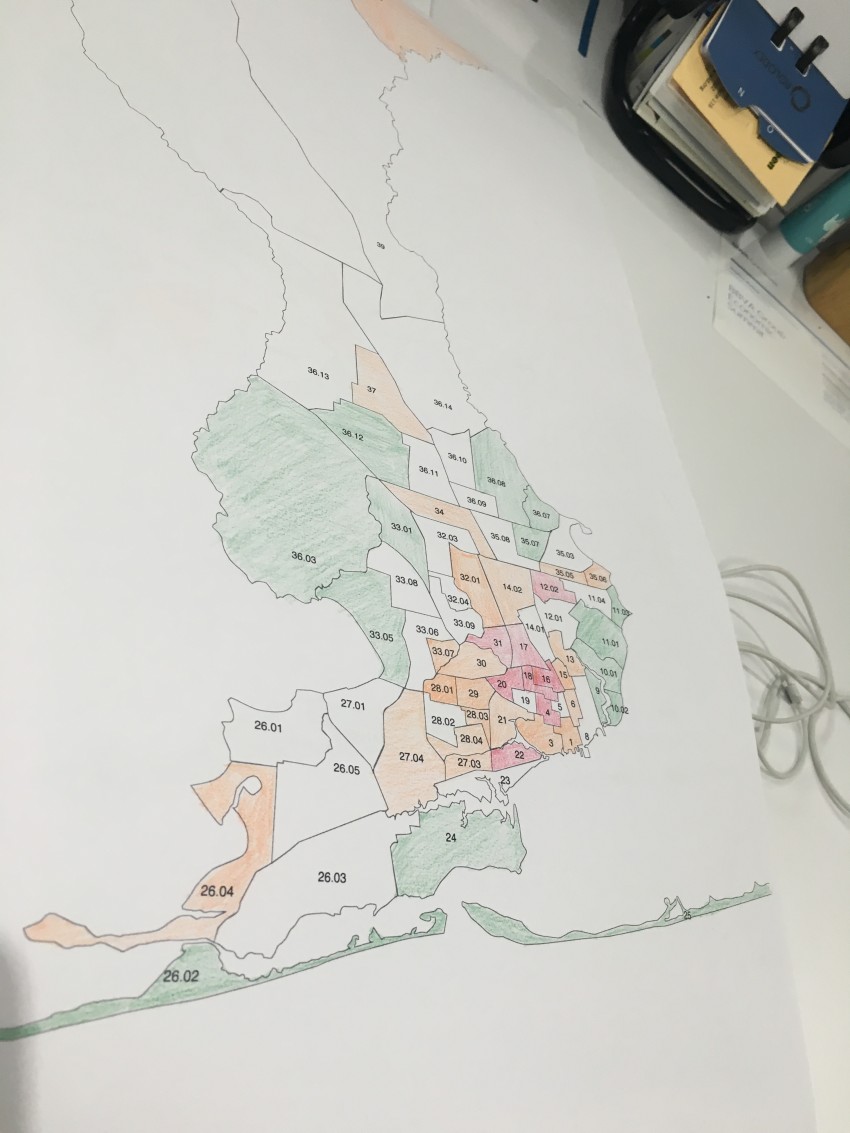Shannon's Window: How we invest in Pensacola's kids
- November 4, 2015
- / Shannon Nickinson
- / community-dashboard

The Rotary Centennial Playground at the Community Maritime Park in downtown Pensacola. Photo credit: Shannon Nickinson
Can we invest in our future for real?
Children are the future. Teach them well and let them lead the way. That’s the way Whitney’s song went back in the day.
Pensacola is a community of deep spirit. Giving is deeply ingrained in the consciousness of this community. We have the largest IMPACT 100 women-only philanthropy group in the nation. Sunday’s Child uses a similar model to pool collected donations into more substantial grants to nonprofits that serve those in need.
We filled the streets last weekend for the Making Strides Against Breast Cancer walk. We use our love of food as a means to raise money for Manna Food Pantries through Throw a Bowl for Manna, The Arc Gateway, WSRE’s Wine & Food Classic — pretty much any cause there is. Rotary built a beautiful playground at the Community Maritime Park with a view that rivals any public play space anywhere.
That sense of giving follows the sons and daughters of this community once they leave the western gate to the Sunshine State.
Masters champion Bubba Watson’s foundation gave $100,000 to the YMCA of Northwest Florida as part of the Y’s campaign to build a new facility in downtown Pensacola.
The gift was announced at the fourth annual Bubba Bash, held at the Pensacola Bay Center on Oct. 24. The new Bear Levin Studer YMCA, a $15 million facility, is slated to open in late 2016.
Among the Y’s many community services and dedication to the health and wellness of this community, it is one of the largest providers of after-school child care in the metro area.
Watson’s foundation also donated $100,000 from Bubba Bash to the new Children’s Hospital at Sacred Heart Hospital.
In September, Sacred Heart announced plans to for a new five-story Children’s Hospital, along with a major expansion to women’s services. Construction is expected to begin in early 2016 and be completed in late 2017.
All in all, it was a good week for our kids.
Which is good, because they need it.
As the Studer Community Institute, in partnership with the University of West Florida, evaluates data about our community, all kinds of nuggets reveal themselves.
The one we’re working on now highlights the number of children who live in households below the poverty line. This map shows Escambia County divided up by Census tracts.
Orange indicates areas where between 10-18.9 percent of households with at least one child live below the poverty line.
Green shows areas where that rate is less than 5 percent.
The red tracts are where that number is 19 percent or more. The highest has 39.3 percent of homes with children in poverty.
As we’ve reported, 66 percent of children in our schools qualify for free or reduced-price lunch. It is number that speaks volumes about the kinds of homes many of our schoolchildren come from.
And the kinds of wages our community pays.
Our children need more than a song to see all the beauty they possess inside.
Addressing this issue is long road. Bruce Katz wrote for the Brookings Institute that as federal government spending shifts more and more toward older Americans, our children are getting short shrift.
Katz writes that smart cities are trying to close the gap themselves, finding different strategies to to invest in the next greatest generation.
The fact that some places have been able to successfully invest in children does not mean that decreasing federal support is a good thing for our nation. Assuming there is no radical change in the federal trajectory, outcomes will begin to vary more dramatically from place to place. Certain states and cities will be able to raise revenue for things like universal Pre-K, better schools, and home visits for low-income parents, while others will not. This will have major implications on intergenerational equity in places that are already struggling.
As the data shows, the struggle is alive and well in Pensacola.

 CivicCon launches with a look at good growth in cities
CivicCon launches with a look at good growth in cities
 Building stronger brains one baby, one parent at a time
Building stronger brains one baby, one parent at a time
 SCI debuts commercial on Early Learning City
SCI debuts commercial on Early Learning City
 Entrecon: World class speakers and an opportunity to sharpen skills
Entrecon: World class speakers and an opportunity to sharpen skills
 PYP Quality of Life survey 2017
PYP Quality of Life survey 2017
 EntreCon Pensacola 2016: A look back
EntreCon Pensacola 2016: A look back
 Leadership tip: getting better employee takeaways
Leadership tip: getting better employee takeaways
 Leadership tip: be interested instead of interesting
Leadership tip: be interested instead of interesting
 Leadership tip: delivering difficult messages
Leadership tip: delivering difficult messages
 Brain Bags boost Arc, Early Childhood Court programs
Brain Bags boost Arc, Early Childhood Court programs